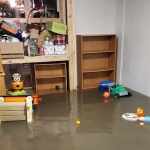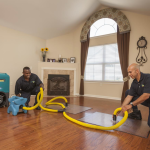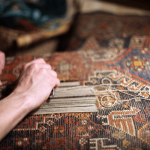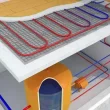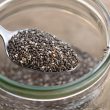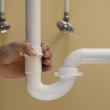Cleaning up a spill on the kitchen floor doesn’t take very long. If water swashes out of the tub, you can use a couple of napkins to clean it out. It’s very easy to work out such minor mishaps.
But you require an action plan when your home has experienced extensive water damage in several rooms. You must know the first steps and the best ways to cut your losses. You should be prepared to take major steps as soon as possible.
This complete guide to water damage covers all the necessary steps for a successful water restoration.
What is water damage restoration?
Water damage restoration can restore your home to what it was before the water damage occurred. Water restoration is a reliable service that eliminates water from your home and restores it to a habitable, pre-damaged condition.
While it’s common to feel panicked when your home has water damage or another water intrusion, it’s also important to remember you need to act as quickly as possible. The longer you wait, the more substantial the damage will get—and the longer the water cleanup will take.
Water causes more than structural damage to your home. It can also pose a significant risk to one’s health. Standing water doesn’t take longer to breed mold and germs, pathogens that can cause severe respiratory illnesses and other problems.
Steps required to deal with water damage
Water quickly spreads and absorbs into floors, soft furnishings, roofs, and more. If you leave water damage for too long, your insurance coverage may not cover it, and the cost of water damage to your home could be substantial.
Following are the required measures you can take after water damage:
Locate water source
Homes typically have three types of water flowing through them at any time. The first type is called clean water. This water comes from leaking pipes and rain and is the simplest for homeowners to clean on their own.
The next type of water is called grey water. It comes from items like washing machines and dishwashers. This water may have pollutants, making it more challenging to ensure proper cleanup.
The last type of water you may experience during a water leak is called black water. Black water may contain toxins and germs that could be harmful, so we do not advise making repairs to the water damage caused by it; instead, you should consult 75 and Sunny Restoration professionals.
Switch off the power
After locating and stopping the water flow, the next process is to unplug the house’s power and gas sources. This is essential if you are dealing with excess water like floods. Before handling any electrical items:
- Make sure you are properly insulated.
- Consult a technician if switching off the main power necessitates you to be standing in water.
Put the insurance carrier on notice.
Based on your insurance coverage, you may be eligible for reimbursement for the repair work and restoration.
Since most homeowner’s insurance policies contain restrictions, it’s crucial to be as specific as possible while speaking with the insurance provider. Make a list of the repairs they will and won’t pay for so you can later protect your coverage rights.
Dry out the space
It’s critical to move quickly to repair water damage to a home. If the water is left standing, mold and mildew can form in as little as 24 hours. To dry out the affected space, remove items such as furniture and place fans on the wet walls and flooring. If the water damage is severe, you might need to rent a few powerful industrial fans to ensure the area dries completely.
Look for hidden moisture.
Once the water has been cleaned, and the air conditioning and fans have been turned on to speed up the drying process, you have to look for any hidden moisture. As it will encourage the growth of mold, bacteria, and other contaminants, hidden moisture can result in additional harm to your property.
You can check beneath the carpets and floorboards to see if water has sipped through them. If it has, carry the fans to the affected space to dry them out completely.
Inspect for serious issues like mold
Look for mold and mildew on damaged items. You must exercise extreme caution if mold and mildew problems are discovered.
Some mold harms humans, and all mold damages the materials it infests. Cut the material out, bag it, and discard it immediately if there are only minor mold issues. Get away from the area, turn off any airflow (to prevent spore contamination), and call an expert if there is substantial mold growth.
Disinfect the area
Spend time disinfecting the areas affected by your water damage repair efforts to verify that all mold and bacteria have been removed. Usually, you can clear it with a straightforward bleach solution. Make sure to disinfect any objects that were in the impacted area as well to ensure that any mold or germs are eliminated.
Remove porous materials and drywall.
Water damage can impact your property’s porous materials, such as the walls. You will need to replace or repair your home’s damaged flooring, carpet, and drywall. If the drywall damage is not too severe, it can be dried and repainted.
Don’t forget to check on the roof and siding for water damage, especially if they are not adequately sealed. Replacing a roof is much more costly than a carpet or wall, so be thorough when inspecting for water-damaged areas around your home. To keep water out, fix any potential weak spots on the shingles and siding you notice.
Finally, keep in mind to save your most priceless items, like jewels, cash, and essential documents.
Final thoughts
Water damage in your house can lead to serious financial difficulties as well as mental discomfort, in addition to being a nuisance. It’s simple to feel overwhelmed, but following the above ways guarantees that the damage is properly resolved.
Once your insurance provider, restoration/construction business, and local authorities (in the event of a natural disaster) have given the go-ahead, it’s time to return to your clean, dry, mold-free house!



